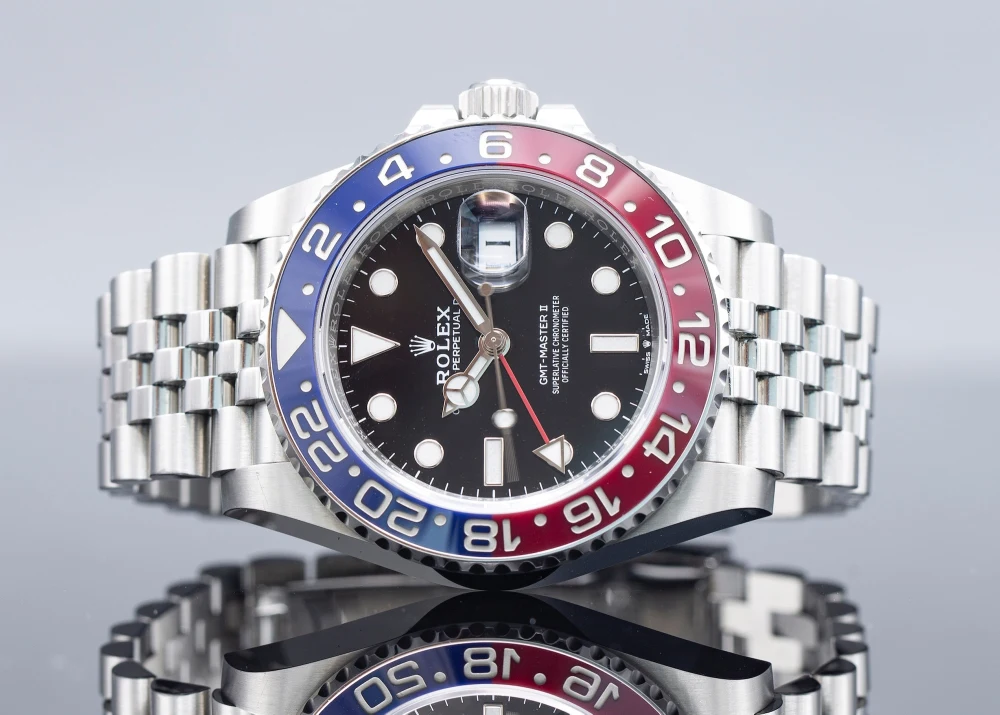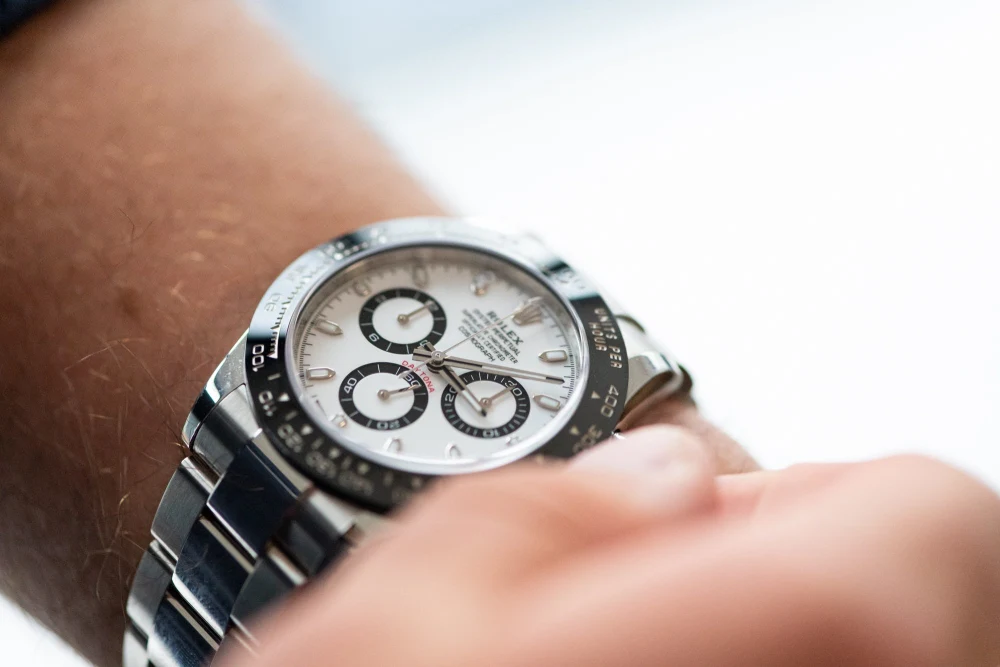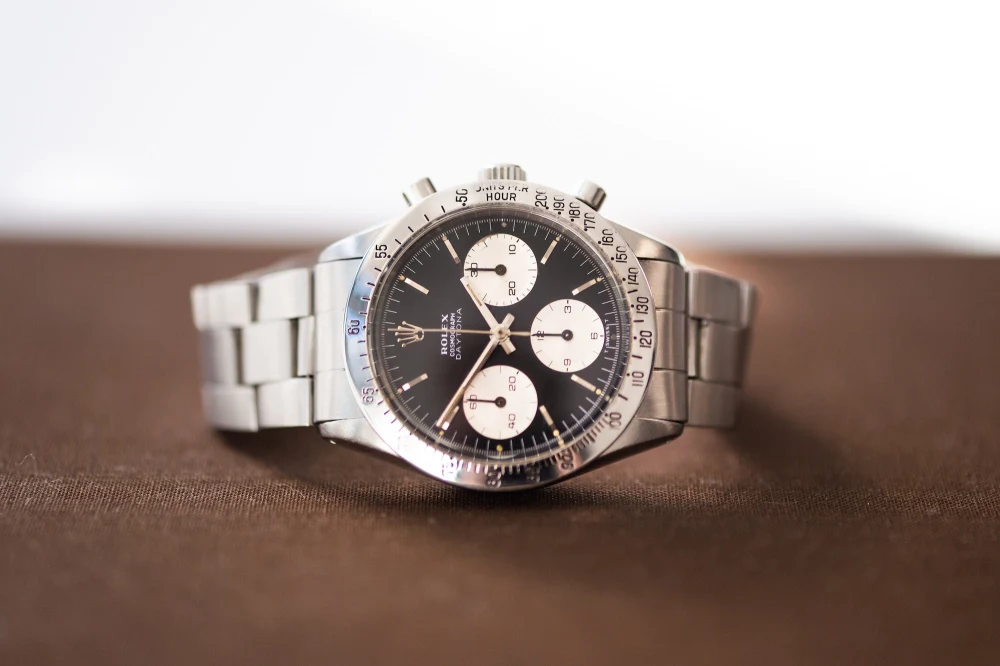5th Sep 2023
From niche hobby to popular culture: We take a look at the luxury watch industry's meteoric transformation over the last decade
by Watch Collecting
For all its heritage and tradition, the luxury watch sector can be surprisingly dynamic. The timepieces themselves are in a constant state of flux, with even those iconic models, whose popularity is rooted in their ageless aesthetics, receiving continuous updates in terms of materials or movement technology.
But the actual business of buying and selling watches is a perpetually changing one, too. The market of 2013 would be practically unrecognisable today, with watch collecting moving from a niche hobby very much into the mainstream, leading to marked transformations in factors such as price, availability and social media coverage. With such a significant market metamorphosis taking place, we thought it was time to review the watch market over the past decade, documenting the most significant developments, and looking to the future to see where the industry might be heading.
Sales
Let’s get some of the numbers out of the way first.
In 2013, the global luxury watch market was valued at around $25B. Last year, it stood at $42.21B and is expected to top $45B this year.
Those figures give just a hint of the incredible rise in popularity of high-end watches. However, the market for preowned models has been growing even faster than the primary. Projected to hit around $30B by 2025, there has been an average annual growth of 8% over the last decade.
The Pre-owned Market
The reasons that preowned watches have become so popular are numerous. Perhaps the most significant is availability. Not surprisingly, it is the popularity of new watches that have made the secondary market so buoyant.
Back in 2013, you could walk into an authorised dealer and buy yourself a steel sports Rolex, maybe even a Daytona if you asked nicely. Submariners and GMT-Master IIs sat in shop windows and were actually for sale, rather than for ‘exhibition purposes’ only. It was a similar story over at Patek Philippe, with Nautiluses available to purchase and Aquanauts considered undesirable.

Not so today. Those just now beginning their journey into elite watch collecting will have likely come across the phenomenon which has frustrated so many over the last few years; i.e. trying to buy the most sought-after watches of the day at retail. In short, it is almost impossible. The most likely scenario is an invite to join the back of a fictitious waiting list. Alternatively, the dealer might invite you to buy a range of unmovable stock to help with your ‘buying history’.

The massive disparity between supply and demand is one element which has driven the rise of the preowned market. Some brands (Rolex in particular) have faced accusations of artificially engineering a shortage to drive up demand. That doesn’t seem to make a lot of sense as it achieves little more than directing potential customers towards secondary sellers, who stand to make enormous profits at the brand’s expense. However, Rolex has recently launched its own preowned programme in order to try and claw back some of that revenue.
But the likes of Patek Philippe and Audemars Piguet (who, along with Rolex, make up the trio of dominant brands in the high-end market) produce some extremely complicated watches that take months or even years to make. Due to their complexity, they are often even more difficult to get hold of and consequently sell for even higher premiums as preowned buys.
Other Factors
The availability of new models, or the lack of it, is not the only driving force behind the rise of the secondary market over the last ten years.
Collectors have become increasingly sophisticated during that time, and have started to want more from their watches. A brand new piece which can be bought by anyone with enough money and/or patience lacks two vital aspects which have become essential to many enthusiasts—exclusivity and history. As a watch is one of the few items of jewellery most men wear regularly, it has a lot of heavy lifting to do when it comes to conveying personality and character. But a vintage watch, one which displays its unique dents, scratches and patina proudly, tells a story about itself and its wearer.

The market for genuine vintage watches has exploded since 2013, with buyers attracted as much to evidence of the watch’s past life as to its design. They have become so popular, in fact, that the last decade has been epitomised by brands bringing out new ‘homages’ to their most admired references from yesteryear.
Social Media and the Digital Transformation
Arguably the most important breakout for the horology industry over the last decade has been the stellar rise of social media. The power wielded by influencers in the watch space is now too great for any brand to ignore, and the ability of a social feed to impact marketplace trends is practically unchallenged. YouTube (est. 2005) and Instagram (2010) have long been at the forefront of this revolution, and both enthusiasts and professionals alike have utilised the platforms, with varying results.
Horology has gone from a closed shop ten years ago, where any information had to be hunted down from someone ‘in the know’, to the situation today where there is an embarrassment of riches. You can find an answer in seconds to any question you might have—the biggest problem now is the source. However, much of the online content available is contentious, with opinions or endorsements laid out only in order to make money. There is also the danger of data fatigue—simply too much information, much of it contradictory, until confusion and exhaustion take over.
There have been plenty of positives too, however. The blog sites and forums which have survived this long have proved themselves reputable, with some, the likes of Hodinkee and Fratello among them, even going so far as to collaborate with manufacturers on special edition pieces.
And, while it may have come at an agonisingly slow pace compared to other markets, watchmakers are taking more advantage of the benefits of e-commerce. Their hands forced by the pandemic, it is now possible to buy a luxury watch online from far more manufacturers than in 2013. It might not be the top-end brands’ favourite way of selling, lacking the personal touch which makes spending thousands on a watch an event, but it can be done at a fraction of the cost of maintaining a physical store. The preowned market, of course, has thrived on e-commerce for years, and the last ten years has seen an explosion of secondary marketplaces online.
Pricing and Flipping
The pricing of luxury watches has been anything but linear for the last decade. It is also a complex business, and subject to a myriad of influences.
Inflation, obviously, is one. Everything increases in price, and the luxury watch sector is no different. If we take Rolex as an example; in 2013 a steel Submariner Date with black bezel (the ref. 116610LN) cost £5,700. Today, at retail, the current version has gone up to £8,650. That’s a rise of 51.75%. The accumulative inflation rate in the U.K. over the last decade has been 46.63%.

That’s understandable, considering the effects of Brexit and the fact that the latest incarnation of the watch is a top to bottom upgrade on the last one. But what about on the preowned market? That same Sub in 2013 could be had pretty much at its official price as a secondary purchase. After that though, things start to go north, and quickly. At its peak last year, you would have needed to fork out around £12,500 for the watch. And the Submariner is not even Rolex’s most coveted model. If we look at the steel Daytona ref. 116500, which launched in 2016 at £10,500. Last year you would not have found one for under £30,000.

But all that is small change compared to what has undoubtedly been the most sought-after model in recent history; Patek’s Nautilus 5711. Launched in 2006, it cost less than £20k on its debut. Popular from the outset, this model steadily increased in desirability over time, with Patek only able to match 10% of the demand. Prices reached their height in 2022 when examples were regularly fetching in excess of £130,000. And who could forget the pandemonium over the 5711’s final encore - a very limited run in collaboration with Tiffany & Co., the first of which was auctioned for an eye-watering US$6.5 million at auction.

The last ten years have given rise to an unpleasant phenomenon which has continued to influence the steep price rises on the secondary market. Flippers have long been an established presence in other market segments, so it was probably only a matter of time before they aimed their sights on the watch industry, too.
If you’re not familiar with the term, a flipper is someone who buys a sought-after product and sells it on quickly for a profit. To do so, they will have both purchasing power as well as established relationships with retailers, and their names on every waiting list they can manage. One person buying up scores of the most desirable watches clearly exacerbates the scarcity, causing prices to rise still further. And retailers will be desperate to keep the flipper as a customer and so will give them first refusal on the most exclusive pieces, and round and round it goes.
Flippers have been the scourge of the genuine collector’s life for a while, but their time might be coming to an end, at least for now. The preowned watch market has been going through a correction for the last few months, with prices falling across the board. Stock market decline, the war in Ukraine, higher interest rates and the collapse of cryptocurrencies have all been blamed, but the upshot is, a reported 24% drop in the luxury watch market index as dealers and investors offload their supply to recoup capital.
The luxury watch industry has progressed and changed a great deal in the last ten years. Perhaps most importantly, it has finally engaged with social media and e-commerce opportunities. It might have been dragged into this kicking and screaming, but the advantages have been such that we can expect a further escalation in the future.
Crucially, the rise of the Smartwatch has not been the death knell many were predicting, with some envisaging another round of devastation on the scale of the Quartz Crisis. The passion and cultural significance of traditional watchmaking is appreciated now more than ever—and there is no reason to suggest it will do anything but increase over the next ten years.


Have your say!